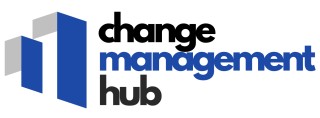
Understanding Lean Portfolio Management
Defining Lean Portfolio Management
Lean Portfolio Management (LPM) is a strategic approach that integrates lean principles with portfolio management to enhance business outcomes. Fundamentally, LPM focuses on the efficient allocation of resources, ensuring that investment funding is strategically directed towards projects and products that align with an organization's objectives. This approach promotes agility and responsiveness within organizations, enabling them to adapt to changes in the business environment swiftly. LPM isn't just about managing portfolios—it's about improving the entire value stream. It ensures that work flows smoothly from conceptualization to delivery, embodying the lean principles of eliminating waste and promoting continuous improvement. By fostering lean governance, organizations can maintain alignment between strategic objectives and project execution, helping them achieve desired results more efficiently. The methodology is not confined to traditional project management; it embraces a broader, more inclusive view that accounts for both the strategic planning and the operational aspects of portfolio operations. LPM supports the scaled agile framework (SAFe), which is crucial for larger organizations aiming to implement lean agile practices on an enterprise scale. This approach enables cross-functional teams to collaborate effectively, enhancing decision-making and refining project delivery efforts. For organizations, adopting Lean Portfolio Management means embracing a dynamic, adaptive approach to portfolio management. As the business landscape continues to evolve, harnessing the power of lean principles and agile methodologies can be key to achieving sustainable success and driving significant business outcomes. This approach is particularly relevant when reflecting on the increasing synergy between change management and agile frameworks, as explored in related discussions about collaborating with schools.The Role of Lean Portfolio Management in Change Management
The Importance of Lean Portfolio Management in Driving Change
Lean Portfolio Management (LPM) plays a crucial role in the landscape of change management by providing a comprehensive framework that aligns strategy with execution. This process is pivotal in ensuring that organizations can efficiently adapt to the evolving market demands and achieve their strategic objectives. One of the primary impacts of LPM in change management is enhancing decision-making by linking strategic planning with portfolio operations. Through lean principles, LPM aids in strategic allocation of resources, ensuring that investment funding is directed toward projects that deliver the highest business outcomes. This strategic alignment supports change initiatives by allowing organizations to respond flexibly to environmental shifts. Moreover, LPM integrates seamlessly with agile frameworks like Scaled Agile (SAFe), facilitating a strong emphasis on continuous improvement. This synergy allows organizations to manage lean agile projects effectively, maximizing the value delivered by agile teams. By promoting transparency and visibility in project portfolio management, LPM ensures that all stakeholders can easily track progress and influence success. Through lean governance, LPM offers robust support for streamlining planning and funding processes. By focusing on lean agile methodologies, it ensures that portfolios are continuously managed to adapt to changes, which is vital for achieving strategic objectives. This adaptability is further bolstered by emphasizing continuous improvement, allowing organizations to evolve and refine their processes to achieve sustainable success. To delve deeper into this framework, understanding the essentials of process safety management is invaluable for aligning LPM steps with safety and regulatory requirements in dynamic business environments. Learn more here.Key Elements of Lean Portfolio Management
Core Components That Drive Lean Portfolio Management Success
Lean Portfolio Management (LPM) fosters an environment where business agility and strategic alignment converge, facilitating organizations to maintain competitiveness in volatile markets. Delving into the nucleus of LPM, several pivotal elements underpin its successful application.- Strategy and Investment Funding: LPM requires organizations to align their portfolio strategy with their business objectives. This alignment ensures that every project within the portfolio contributes to the overarching vision. Investment funding must be dynamically allocated to maximize business outcomes, allowing flexibility to adapt to changing priorities.
- Agile Portfolio Operations: Agile methods form the backbone of LPM. By adopting an agile framework, organizations can ensure that project teams are empowered to make decisions swiftly, promoting efficient project and product delivery. Agile portfolio management facilitates seamless handling of multiple initiatives, reducing bottlenecks and enhancing project management efficacy.
- Lean Governance: Effective lean governance involves steering the organization through consistent oversight while promoting innovation through lean principles. It is about finding the right balance between control and freedom, ensuring that strategic objectives remain intact even as teams pursue continuous improvement.
- Continuous Planning: In contrast to traditional fixed planning cycles, lean portfolio management emphasizes continuous, adaptive planning. Organizations need to maintain a constant loop of feedback and adapt their strategies in response to evolving customer demands and market conditions.
- Decision-Making Structures: Decision-making in LPM is decentralized yet strategic, enabling faster adaptation to changes. By empowering teams with the autonomy to make informed decisions, organizations can optimize work streams and align efforts effectively with strategic priorities.
Challenges in Implementing Lean Portfolio Management
Overcoming Hurdles in Lean Portfolio Management Implementation
Implementing Lean Portfolio Management (LPM) in organizations is not without its challenges. While the benefits of integrating lean principles into portfolio management are clear, the path to achieving effective change management through LPM can be fraught with obstacles. Here are some key challenges faced by organizations:
- Resistance to Change: One of the most common challenges is resistance from teams and individuals who are accustomed to traditional management practices. Transitioning to a lean agile framework requires a shift in mindset, which can be difficult for some.
- Aligning Strategic Objectives: Ensuring that the strategic objectives of the organization align with the lean portfolio management approach is crucial. This requires clear communication and a shared understanding of the goals across all levels of the organization.
- Resource Allocation and Funding: Implementing LPM often involves changes in how resources are allocated and how funding decisions are made. This can lead to conflicts, especially when existing projects and investments are reassessed under new criteria.
- Integration with Existing Processes: Integrating LPM with existing processes and frameworks, such as SAFe or other agile frameworks, can be complex. Organizations need to ensure that new processes complement rather than disrupt current workflows.
- Continuous Improvement Culture: Fostering a culture of continuous improvement is essential for LPM success. Organizations must encourage teams to regularly review and refine their processes to enhance business outcomes.
- Effective Decision Making: Lean governance requires agile decision making that is often decentralized. This can be challenging for organizations used to a more hierarchical decision-making structure.
Addressing these challenges requires a strategic approach, focusing on clear communication, training, and fostering a culture that embraces change. Organizations that successfully navigate these hurdles can leverage LPM to enhance project delivery, optimize portfolio operations, and achieve significant improvements in business outcomes.
Case Studies: Success Stories in Lean Portfolio Management
Real-Life Examples of Lean Portfolio Management in Action
Incorporating lean portfolio management principles can significantly transform organizations by streamlining project operations and enhancing strategic decision-making. Several high-profile organizations have successfully employed lean portfolio management to optimize their project portfolios and align with agile frameworks like SAFe and lean agile to achieve substantial business outcomes. A noteworthy example involves a multinational tech firm that faced challenges in managing cross-functional teams scattered across numerous projects. By adopting lean portfolio management, the organization established a structured approach to prioritize their work based on strategic objectives, leading to improved portfolio management and project delivery outcomes. Another success story is an established manufacturing company that utilized lean principles to enhance its product development cycle. With lean portfolio management, the company revamped its investment funding process, resulting in faster delivery of projects and a heightened focus on continual improvement. Furthermore, a healthcare organization successfully implemented an agile portfolio management strategy to better align its project initiatives with its overarching mission. By fostering streamlined communication and collaboration, the organization drastically improved the coordination among teams and assured that its portfolio operations were meeting strategic objectives consistently. These cases demonstrate that with the right lean governance and portfolio strategy, organizations from varied industries can tackle complex challenges and achieve sustainable growth. Successful deployment of LPM often results in enhanced portfolio operations, more efficient use of resources, and, ultimately, positive impacts on business outcomes.Future Trends in Lean Portfolio Management and Change Management
Anticipating Future Trajectories in Lean Portfolio Management
The landscape of lean portfolio management is evolving at a rapid pace, influenced by various technological advances and strategic shifts. As organizations navigate this dynamic environment, several trends are shaping the future of lean portfolio management in connection with change management.- Increased Integration of Agile and Lean Principles: Companies are increasingly blending lean and agile methodologies to enhance decision making and strategic alignment. This integration helps organizations streamline their portfolio operations, improve business outcomes, and achieve their strategic objectives more effectively.
- Adoption of Scaled Agile Framework (SAFe): The Scaled Agile Framework is becoming a popular choice for businesses wanting to implement lean practices at an enterprise level. SAFe Lean management offers a structured approach for continuous improvement and effective project portfolio management, aligning teams towards common strategic goals.
- Emphasis on Agile Portfolio Management: Agile portfolio management is emerging as a critical paradigm, enabling organizations to adapt to changing customer demands and market conditions. This approach focuses on maximizing value delivery by aligning investment funding with strategic priorities and optimizing the allocation of resources across multiple projects.
- Leveraging Technology for Enhanced Portfolio Management: Technological advancements are transforming how portfolios are managed. Automation tools, AI-driven analytics, and digital platforms are facilitating better data-driven decision making and providing real-time insights into project performance and resource utilization.
- Focus on Lean Governance and Continuous Improvement: Future trends point towards strengthening lean governance structures to support more adaptive and responsive project planning and execution processes. Organizations are placing a greater emphasis on fostering a culture of continuous improvement, encouraging innovation and adaptability.













